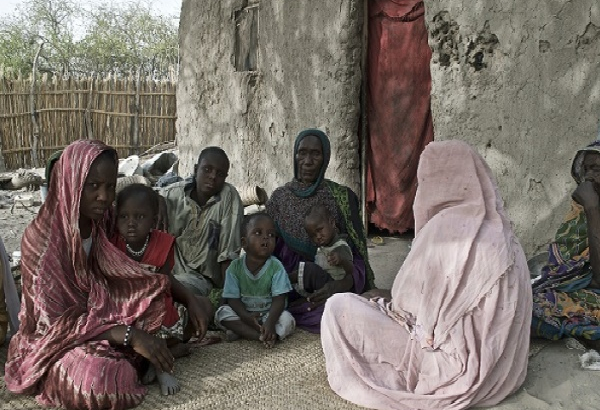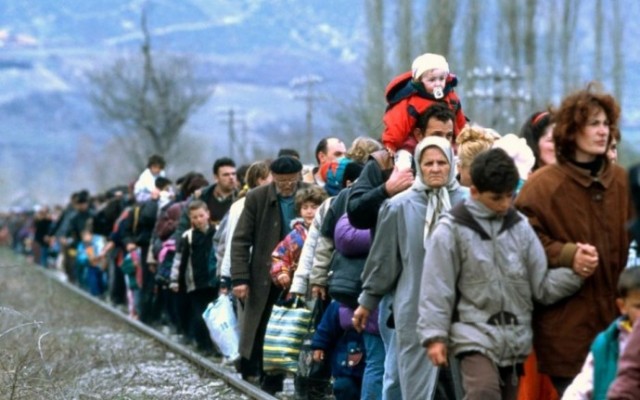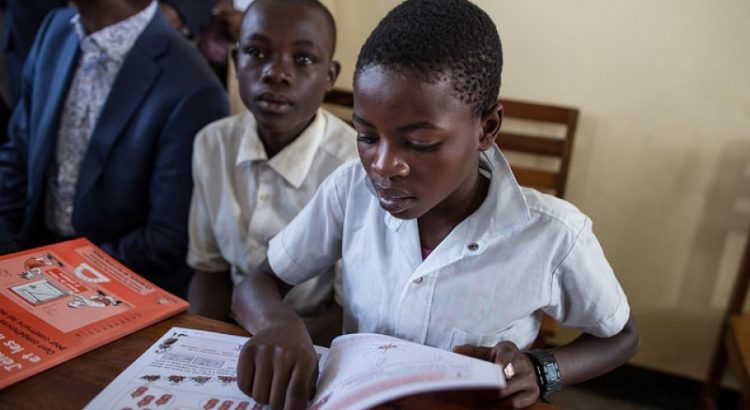Fuente globalpartnership.org / 7 de junio de 2016
GPE and IIEP publish new guidelines for preparing transitional education plans
A flood of children fleeing violent attacks in neighboring countries have sought refuge in Chad, one of the poorest countries in the world. Conflict in Yemen over the last two years damaged about 1,000 schools and left 1.8 million children there out of school. The Democratic Republic of Congo (DRC), which has long struggled with protracted conflict, has one of the largest numbers of out-of-school primary-age children in the world (approximately 3.5 million).
The Global Partnership for Education has helped these countries and others in similar circumstances address these crises to limit their impact on the education system. That response often requires the development and implementation of a transitional education plan, or TEP, which focuses on addressing critical education needs in the immediate and medium term to keep as many children learning as possible.
A TEP is a policy instrument that enables authorities to bring together humanitarian and development partners to prepare a structured plan to help steer and mobilize resources that will help maintain education services in the wake of civil or cross-border conflict, health emergencies or natural disaster.
At the same time, it puts in place reforms that can render education systems more accountable, inclusive, and effective over time.
New guidelines for transitional education planning
GPE and the UNESCO International Institute for Educational Planning have just published the Guidelines for Transitional Education Plan Preparation, providing technical guidance for countries trying to educate their children even as they face new or persistent crisis.
The new guidelines are the result of an extensive collaboration among key partners active in the field of education in emergencies and protracted crises as part of the Inter-agency Network for Education in Emergencies: UNHCR, UNICEF, the Global Education Cluster, the Global Education Campaign and the World Bank.
The guidelines were developed by building on country contexts, experiences, and needs collected from crisis-affected country practitioners in South-Sudan, Central African Republic, DRC, Chad, Somalia, and Haiti.
It’s no coincidence that the TEP Guidelines come at a time when GPE is steadily intensifying its efforts to help fragile and conflict-affected countries keep their children in school.
Guided by the new global education goals, which stress help for countries affected by adverse challenges, and recognizing that the number of out-of-school children living in countries facing war and violence has significantly grown over the last decade and a half 1, GPE has increased its funding for such countries from 21% of overall funding in 2008 to about 50% by 2015.
Bridging the divide between humanitarian and development support
The TEP Guidelines arrive the same week as the first-ever World Humanitarian Summit in Istanbul, where a new education crisis platform and fund called Education Cannot Wait is being launched.
The new platform addresses the reality that humanitarian responses have historically treated education without the kind of urgency that other essential human services receive. One statistic tells much of the story: less than 2% of all humanitarian aid goes to education.
Where longer-term planning or the implementation of an existing education sector plan – the longer-term blueprint of a country’s educational progress – is compromised by growing humanitarian emergencies, a TEP will help bridge the humanitarian-development divide by bringing together authorities, development and humanitarian actors, and civil society.
In crisis situations, there is an increased need to align actions and to ensure that external efforts are complementary and address key priorities.
Sometimes it’s also necessary to harmonize emergency or early recovery education activities that may be specified in a humanitarian response plan with longer-term development priorities for the education sector, which can help countries manage rapidly changing contexts.
A TEP might, as in Chad, anticipate future needs associated with the return of refugees to the country or internally displaced persons to their home areas, or considerations related to protracted displacement.
GPE supports fragile and conflict-affected countries
Right now, 28 of GPE’s 65 developing country partners are considered fragile or conflict-affected, and 12 of those countries are currently implementing transitional education plans with GPE’s financial support.
One of those countries is Chad, which became the first GPE partner to include refugees in its transitional education sector plan in 2013. GPE has subsequently provided Chad with two grants to implement its TEP and is already supporting the country’s development of a post-crisis full education sector plan for the period 2017 to 2026.
Yemen developed a TEP for 2013 to 2015. Based on it, US$10 million GPE funds were redirected in to rebuild schools, provide psychosocial support to 37,500 girls and boys, and replenish basic school supplies for nearly 91,000 children. More recently, during the meeting of the country’s local education group in Amman, Jordan, Yemeni partners supported the development of a renewed TEP to ensure the continuation of previously suspended education activities in the country.
Also, GPE enabled DRC to prepare a transitional education plan for the period 2012 to 2014, making it the country’s first education sector plan since independence in 1960. Motivated by the new TEP, the government increased the share of its budget allocated to education, from 9% in 2010 to 16% in 2013, with the goal of reaching 18% by 2018.
When children’s lives are upended by humanitarian emergencies, it’s essential to keep them in school where they can continue to follow their rightful developmental path and find protection. A transitional education plan is a critical first step toward that goal.
1 The proportion of out-of-school children living in conflict-affected countries increased from 30% in 1999 to 36% in 2012, and increased substantially in the Arab States and in South and West Asia (GEM Report 2015)
Raphaëlle Martinez Lattanzio is a Senior Education Specialist in charge of education planning, system strengthening and finance at the Global Partnership for Education.
Read our Policy Brief: GPE’s work in conflict-affected and fragile countries
Link original: http://www.globalpartnership.org/blog/how-countries-crisis-can-continue-provide-education















 Users Today : 21
Users Today : 21 Total Users : 35460152
Total Users : 35460152 Views Today : 35
Views Today : 35 Total views : 3418818
Total views : 3418818